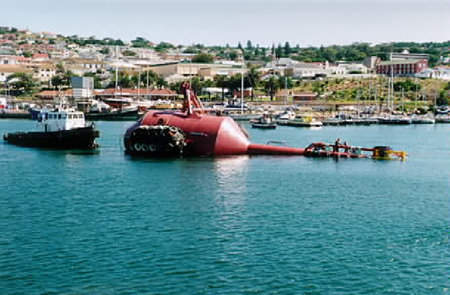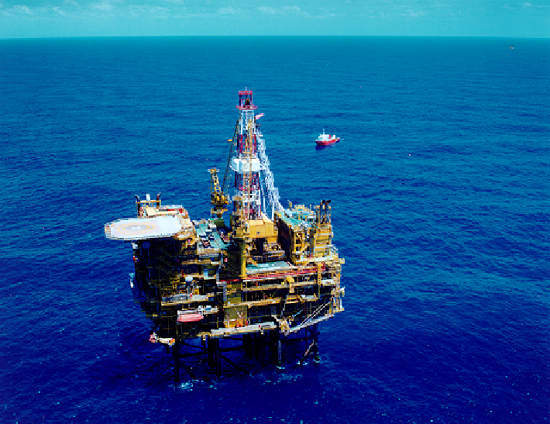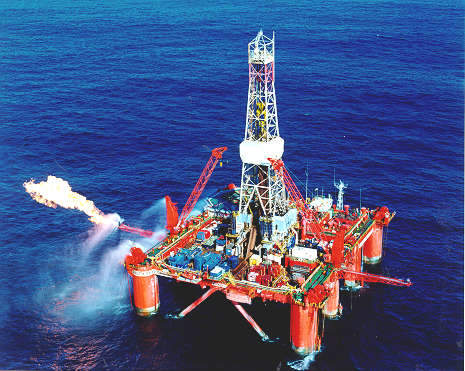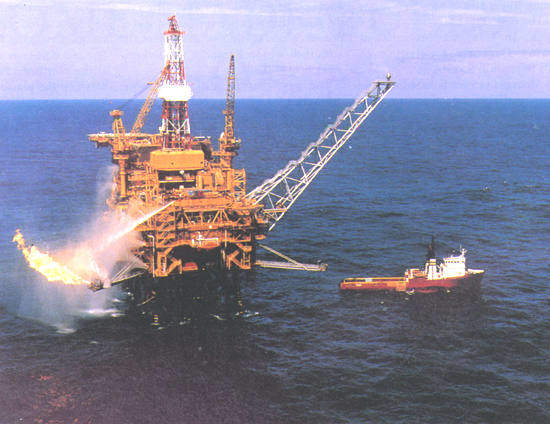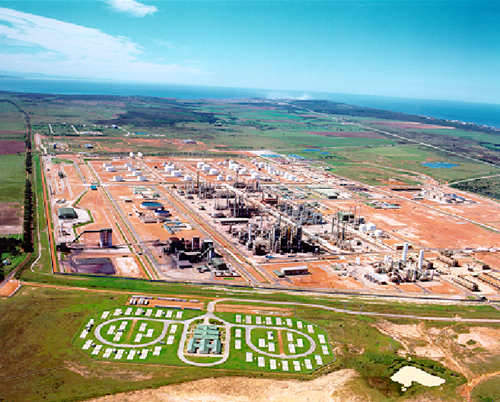The EM and satellite gas fields are situated 120km south-west of the Mossel Bay complex in the Western Cape Province of South Africa.
The fields are located in the Bredasdorp Basin Block 9 and were discovered in 1984 when the well tested ten million cubic feet per day in early Cretaceous sands. South Africa’s national gas company PetroSA is the operator of several fields within the block.
The porosity is typically 13% and permeability ranges from 5mD to 200mD. Reserves are 600 billion cubic feet (Bcf).
Development drilling was carried out with the semisubmersible rig, South Seas Driller.
Mossgas Gas Field Project development
The development included three new production wells, tied back by a 450mm (18in) pipeline to Mossgas’ production platform on the FA field situated 49km to the east. Production is controlled by a buoy, overhead.
The gas field was developed by the Bredasdorp Alliance between the owner, Mossgas, and managing contractor Dresser Kellogg.
The operator PetroSA was formed in 2002 through the merger of Soekor E and P, Mossgas and parts of the Strategic Fuel Fund (SFF), a subsidiary of South African state-owned national energy utility Central Energy Fund (CEF) SOC.
The $387.5m project first delivered gas to the onshore plant in April 2000. The gas is processed at the PetroSA gas-to-liquids (GTL) refinery, which was the world’s first GTL refinery commissioned in 1992 with a production capacity of 45,000 barrels of oil equivalent per day (boepd).
Production wells
The two-phase project involved the drilling of up to five subsea wells into the EM field.
A single-dual lateral was drilled into the EBF field immediately after the first two EM wells.
The first phase was completed in April 2000 and the second phase was completed in 2001.
Production module
A 346t reception-facilities module was installed on the FA platform to receive hydrocarbons from EM, as well as future fields in the area.
It was built in Cape Town by SA Five Engineering, at a cost of R25m. The module measures 14m x 7m x 17m.
Its purpose is to ensure that the gas and condensate received from the new gas fields are compatible with the existing production facilities on the production platform.
The module represents a world-first, as hydrocyclones have never previously been used to separate condensate and MEG (monoethylene glycol) on a commercial scale.
Mossgas Gas Field Project buoy
A 55m-high buoy enables Mossgas to control new production wells from the FA platform.
The R34m buoy is the second of its kind in the world. It weighs 331t and the lower hull’s diameter is 8m.
It is equipped with subsea control, as well as UHF / VHF and satellite communication systems.
In addition, a complete, self-contained power-generation system forms part of the equipment onboard.
The buoy carries diesel and other fluids required for the operation of the wells and pipelines. Maintenance personnel will periodically visit the buoy, which can take up to six people on board.
For protection, the buoy was painted above the waterline to the top of the mast. It is also equipped with a flashing marine warning light, a foghorn and a submarine pinger.
The buoy has a design life of 25 years (100-year storm) and can serve up to ten production wells. It can be moved to other locations once the EM field is depleted.
Fabrication and installation
J Ray McDermott (Middle East)c built the buoy at its Jebel Ali yard in Dubai. Fabrication commenced in August 1999 and it was shipped to Mossel Bay on 23 January 2000 aboard the Kamu, a Japanese vessel equipped with a 450t crane.
The buoy was anchored in Mossel Bay, before being towed out by two tugs to the EM site in late February 2000.
It was then installed by the Seaway Discovery. It was tethered to a 2,000t concrete gravity base on the seabed at a depth of 95m.
The gravity base was constructed in Simonstown, near Cape Town.
A total of three double steel-wire tethers, each 80m-long and 50mm in diameter, were used for this purpose.

